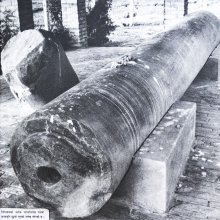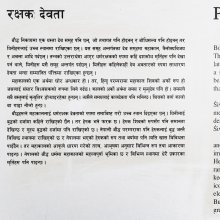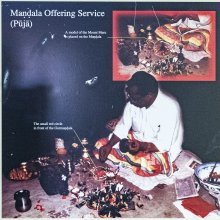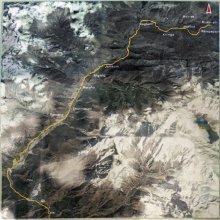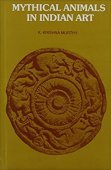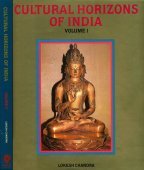Cha: 20 definitions
Introduction:
Cha means something in Hinduism, Sanskrit, Buddhism, Pali, the history of ancient India, Marathi, Jainism, Prakrit, Hindi, biology. If you want to know the exact meaning, history, etymology or English translation of this term then check out the descriptions on this page. Add your comment or reference to a book if you want to contribute to this summary article.
Cha has 18 English definitions available.
Alternative spellings of this word include Chha.
Ambiguity: Although Cha has separate glossary definitions below, it also represents an alternative spelling of the word Ca.
Images (photo gallery)
(+11 more images available)
Languages of India and abroad
Sanskrit dictionary
[Deutsch Wörterbuch]
Source: Cologne Digital Sanskrit Dictionaries: Böhtlingk and Roth Grosses Petersburger WörterbuchCha (छ):—1.
1) adj. a) rein [Medinīkoṣa kh. 1.] — b) zitternd, beweglich [EKĀKṢARAK. im Śabdakalpadruma] —
2) f. chā das Verdecken [Medinīkoṣa] — Vgl. chā .
--- OR ---
Cha (छ):—2. (von chā) m. das Abschneiden, Abschnitt (chedana) [EKĀKṢARAK. im Śabdakalpadruma]
--- OR ---
Chā (छा):—1. (cho), chyati [Pāṇini’s acht Bücher 7, 3, 71.] [Vopadeva’s Grammatik 11, 3.] (ava) cacchus [Pāṇini’s acht Bücher 7, 4, 83, Vārttika von Kātyāyana. 2,] [Scholiast] (ed. Calc.); acchāt und acchāsīt [Pāṇini’s acht Bücher 2, 4, 78.] [Vopadeva’s Grammatik 8, 87.] partic. chāta und chita [Pāṇini’s acht Bücher 7, 4, 41.] [Vopadeva’s Grammatik 26, 120.] abschneiden, zerschneiden [DHĀTUP. 26, 37.] cacchuḥ [Bhaṭṭikavya 14, 101.] yakṣendraśaktimacchāsīt [15, 40.] chāta abgeschnitten [Amarakoṣa 3, 2, 53.] [Hemacandra’s Abhidhānacintāmaṇi 1489,] [Scholiast] chita dass. [Amarakoṣa] [Hemacandra’s Abhidhānacintāmaṇi 1489.] chāta mager [Amarakoṣa 2, 6, 1, 44.] [Hemacandra’s Abhidhānacintāmaṇi 449.] — caus. chāyayati [Pāṇini’s acht Bücher 7, 3, 37.] [Vopadeva’s Grammatik 18, 6.] — Vgl. chavi . — anu aufschneiden (die Haut): anu chya śyā.ena.tvacame.ām [Atharvavedasaṃhitā 9, 5, 4.] — ava die Haut abziehen, schinden: tvacamevāvacchāya [The Śatapathabrāhmaṇa 1, 1, 4, 1. 3, 1, 2, 15.] avacchito ha vai puruṣaḥ [16. 3, 7.] vatsacchavyau sakarṇapucchāvacchāte [Kātyāyana’s Śrautasūtrāṇi 22, 1, 20.] — ā dass.: sa yatrāchyati yata etallohitamutpatati [The Śatapathabrāhmaṇa 3, 8, 2, 14.] ekadhāsya tvacamāchyatāt [Aitareyabrāhmaṇa 2, 6.] [Vājasaneyisaṃhitā 23, 39. 41.] — pra kleine Einschnitte in die Haut machen, schröpfen; überh. wund machen: pracchayitvā [Suśruta 1, 33, 18. 2, 300, 15.] pracchite śophe [247, 19. 1, 40, 6.] ādaṃśaṃ sveditaṃ cūrṇaiḥ pracchitaṃ pratisārayet [2, 294, 1.]
--- OR ---
Chā (छा):—2. m. (nom. chās) ein Junges [EKĀKṢARAK. im Śabdakalpadruma]
--- OR ---
Chā (छा):—1. , chāta = durbala [UJJVAL.] zu [Uṇādisūtra 3, 86.] — ava [?Z. 3 lies Kātyāyana’s Śrautasūtrāṇi] — ā abschneiden, abschaben: barhiḥ Citat bei [Sāyaṇa] zu [Ṛgveda 7, 83, 1.] — vi caus. verwunden: hastīva vicchāyayati [The Śatapathabrāhmaṇa 14, 7, 1, 20.] nach [Sāyaṇa] von vich und = vidrāvayati . — nyāvi Jmd sich an Jmd (dat.) reiben lassen, in nahe Berührung bringen: yatharṣa.hāya vāśi.ā nyāvicchā.ati (sic) [Taittirīyabrāhmaṇa 1, 1, 9, 9.] Comm. trennt vāśitāni ā und erklärt wie wenn er dem Stiere (Lock-) Töne macht.
Source: Cologne Digital Sanskrit Dictionaries: Sanskrit-Wörterbuch in kürzerer FassungCha (छ):——
1) Adj. — a) rein. — b) zitternd , beweglich. —
2) m. das Abschneiden , Abschnitt. —
3) *f. ā das Verdecken. —
4) n. Zeichen , Abzeichen [Viśvakośa (pischel) ]
--- OR ---
Chā (छा):—1. , chyati abschneiden , zerschneiden ([Bhaṭṭikāvya] ) *PARTIC. chāta und chita abgeschnitten ; chāta auch mager , schwach. — *Caus. chāyayati. — Mit anu aufschneiden (die Haut). — Mit ava die Haut abziehen , schinden. Partic. avacchita und avacchāta , letzteres auch abgemagert [Gautama's Dharmaśāstra] — Mit ā —
1) dass. —
2) abschneiden , abschaben. — Mit pra ( pracchayet [Carakasaṃhitā 6,13] und pracchayitvā [Suśruta (rotrh) ] ) Kleine Einschnitte in die Haut machen , schröpfen , wund machen überh. Partic. pracchita.
--- OR ---
Chā (छा):—2. m. (Nom. chās) ein Junges. Das. f. s.u. cha.
Sanskrit, also spelled संस्कृतम् (saṃskṛtam), is an ancient language of India commonly seen as the grandmother of the Indo-European language family (even English!). Closely allied with Prakrit and Pali, Sanskrit is more exhaustive in both grammar and terms and has the most extensive collection of literature in the world, greatly surpassing its sister-languages Greek and Latin.
See also (Relevant definitions)
Starts with (+7835): Ca, Ca-kurarparavai, Caca-cacaenal, Cacakam, Cacakati, Cacam, Cacampari, Cacanakkani, Cacanam, Cacanapattiram, Cacanavirutti, Cacaparam, Cacaputam, Cacarputam, Caccai, Caccam, Caccampiratayam, Caccanar, Caccaram, Caccaravu.
Ends with (+1516): Aaccha, Aacha, Aadalodakathila pacha, Aamcha, Abbhaaccha, Abbhuvagaccha, Abhatthacha, Abhigaccha, Abhigaccha, Abhishocha, Abhivancha, Abhiyancha, Abhrapishacha, Abhyarcha, Abhyarchcha, Abua ocha, Aca, Acacha, Accha, Acchaccha.
Full-text (+897): Cham, Accha, Mahecha, Apuccha, Aticcha, Chita, Pracchita, Pacchahshasya, Shastriya, Pach-cha-pushpam, Tiru-nitripach-cha, Natakiya, Angiya, Uttariya, Chas, Asmadiya, Ksharaccha, Chas tang, Ashviya, Shanadari.
Relevant text
Search found 108 books and stories containing Cha, Chā; (plurals include: Chas, Chās). You can also click to the full overview containing English textual excerpts. Below are direct links for the most relevant articles:
Guhyagarbha Tantra (with Commentary) (by Gyurme Dorje)
Text 17.9 (Commentary) < [Chapter 17 (Text And Commentary)]
Text 15.26 (Commentary) < [Chapter 15 (Text and Commentary)]
Text 15.27 (Commentary) < [Chapter 15 (Text and Commentary)]
The Agni Purana (by N. Gangadharan)
Chapter 313 - The mantras relating to the worship of different gods
Chapter 201 - Mode of worshipping Viṣṇu in a figure of nine compartments
Chapter 144 - Mode of worship of Goddess Kubjikā (continued)
Vasudevavijaya of Vasudeva (Study) (by Sajitha. A)
Sandhi (e): Vyañjanasandhi < [Chapter 3 - Vāsudevavijaya—A Grammatical Study]
Lakāra-artha < [Chapter 3 - Vāsudevavijaya—A Grammatical Study]
Rig Veda (translation and commentary) (by H. H. Wilson)
Jnaneshwari (Bhavartha Dipika) (by Ramchandra Keshav Bhagwat)
Verse 10.35 < [Chapter 10 - Vibhuti-yoga]
Vietnamese Buddhist Art (by Nguyen Ngoc Vinh)
5. Buddhist monuments in Champa < [Chapter 2 - Similarity of Buddhist monuments in South Vietnam and South East Asia]
1. Sculptures in Champa < [Chapter 4 - The Sculpture and its Reciprocal Influence]
2. Avalokitesvara images in Champa < [Chapter 3 - Unifying factors of the Avalokitesvara Images in South Vietnam and South East Asia]
Related products
